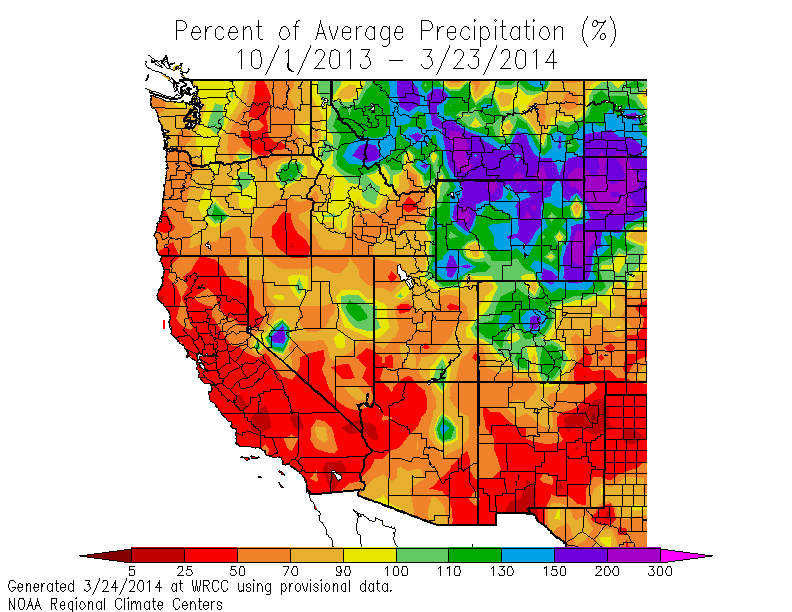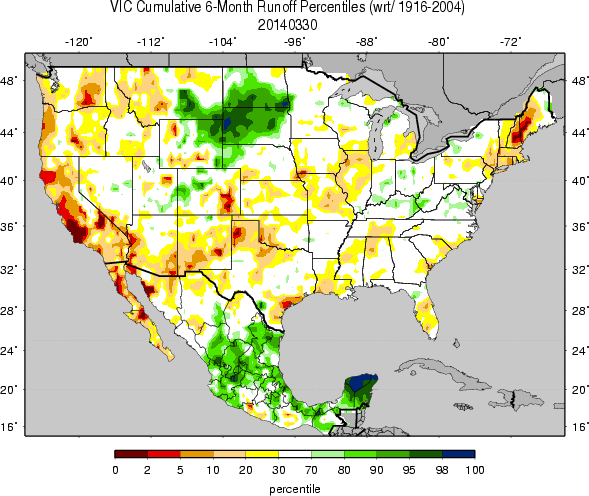California Mountain Snowpack Likely to Receive a Failing Mark Tomorrow
Rain and snow are falling today, but the winter of 2013-14 was historically hot and dry.

On average, roughly 90 percent of the precipitation that falls in California falls between October 1 and the end of March.
That makes the April 1 Sierra Nevada snowpack survey conducted by the California Department of Water Resources a sort of final exam for gauging the state’s water supply going into spring and summer.
Official measurements will not be released until tomorrow afternoon, but electronic sensors and satellite measurements foretell what is missing in California’s granite interior: snow.
If snow levels were letter grades, the winter of 2013-14, like the two years before, would fail.
Statewide, the snowpack is just 29 percent of normal. Snow banks that are usually waist-deep now barely reach the knees.
Key reservoirs that supply farms and cities from Redding to San Diego are already well below average. A pitiful snowpack means little water to refill them.
The effects are far-reaching and will only worsen as the spring turns to summer. The risk of wildfires is high. Air pollution has increased. Farmers in the southern San Joaquin Valley, who are most vulnerable to droughts, will leave as much as 800,000 acres unplanted because they are getting no water from canals. Rivers are so low that inland fish hatcheries are carrying young salmon to the ocean in trucks.
Precipitation is just one part of the story. The winter of 2013-14 was also the hottest in state history. Temperatures ranged from 2 degrees to 4 degrees Fahrenheit above normal. The effect was like blasting a hair dryer directly at the soil, as the image below shows.

A patter of rain and snow may fall in the next few weeks, but spring is here and April 1 marks the peak snowpack. After tomorrow, the trend line for California’s snowpack is a downward slope towards bare ground.
Brett writes about agriculture, energy, infrastructure, and the politics and economics of water in the United States. He also writes the Federal Water Tap, Circle of Blue’s weekly digest of U.S. government water news. He is the winner of two Society of Environmental Journalists reporting awards, one of the top honors in American environmental journalism: first place for explanatory reporting for a series on septic system pollution in the United States(2016) and third place for beat reporting in a small market (2014). He received the Sierra Club’s Distinguished Service Award in 2018. Brett lives in Seattle, where he hikes the mountains and bakes pies. Contact Brett Walton









Leave a Reply
Want to join the discussion?Feel free to contribute!